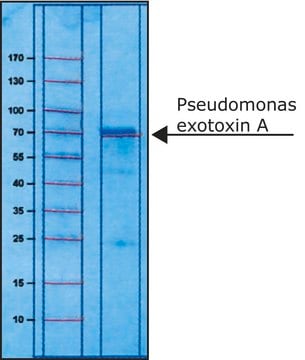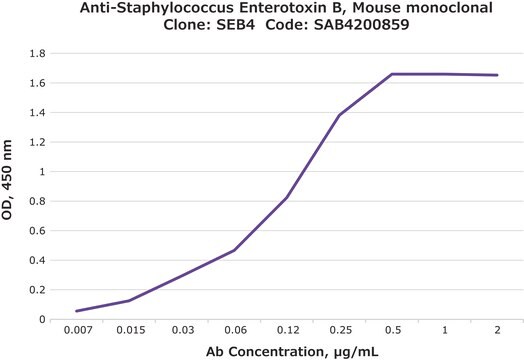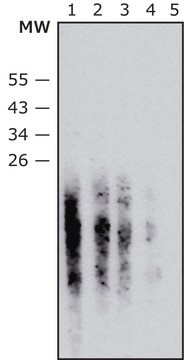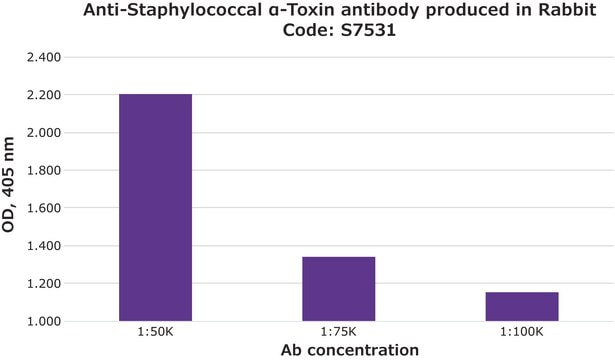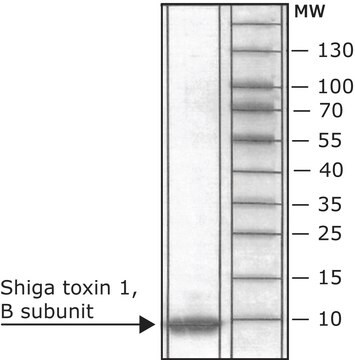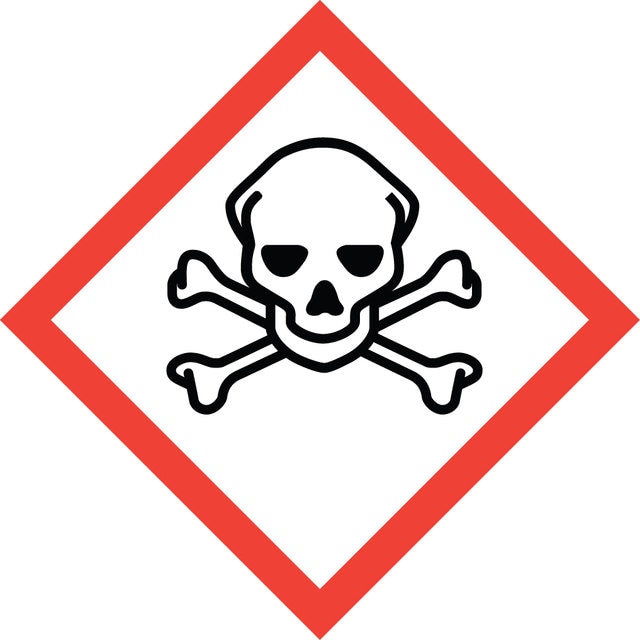추천 제품
구성
Contains ~50% protein (Lowry); balance primarily sodium chloride and sodium phosphate buffer.
Quality Level
재고 정보
not available in USA
solubility
H2O: soluble 0.50-0.60 mg/mL, clear to slightly hazy, colorless to faintly yellow
저장 온도
−20°C
애플리케이션
TSST-1 has been used for superantigen stimulation in T cells. Furthermore, studies have reported that TSST-1 can induce TNF-α secretion in peripheral blood mononuclear cells (PBMCs)4,5.
생화학적/생리학적 작용
Superantigen for T-lymphocytes.
제조 메모
Toxic shock syndrome toxin-1 (TSST-1) is soluble in water at 0.50 - 0.60 mg/ml and yields a clear to slightly hazy, colorless to faint yellow solution.
신호어
Danger
유해 및 위험 성명서
Hazard Classifications
Acute Tox. 2 Dermal - Acute Tox. 2 Inhalation - Acute Tox. 2 Oral
Storage Class Code
6.1A - Combustible acute toxic Cat. 1 and 2 / very toxic hazardous materials
WGK
WGK 3
Flash Point (°F)
Not applicable
Flash Point (°C)
Not applicable
L Blanco et al.
Infection and immunity, 58(9), 3020-3028 (1990-09-01)
Toxic shock syndrome toxin 1 (TSST-1), a 22-kilodalton protein made by strains of Staphylococcus aureus harboring the chromosomal toxin gene, may elicit toxic shock syndrome in humans. In vitro, TSST-1 induces T cells to proliferate and macrophages to secrete interleukin-1.
M Ramírez et al.
International immunology, 11(9), 1479-1489 (1999-08-28)
The superantigen toxic shock syndrome toxin (TSST)-1 can induce tumor necrosis factor (TNF)-alpha expression in T cells and monocytes, through different signaling pathways. We have stimulated peripheral blood mononuclear cells with TSST-1 and found that the major cell producers of
M Buxadé et al.
Immunology, 102(4), 416-425 (2001-05-01)
Tumour necrosis factor-alpha (TNF-alpha) is a proinflammatory cytokine produced by several cell types, including T cells upon antigen stimulation. Its production is crucial for the development of an early defence against many pathogens, but its beneficial effects are dependent on
Khojasteh V Javid et al.
Iranian journal of microbiology, 3(4), 170-176 (2012-04-25)
The aim of study was to develop a rapid assay, dye labelled monoclonal antibody assay (DLMAA), using non-radioactive organic synthetic dyes for identification of Toxic Shock Syndrome Toxin-1 (TSST-1) producing strains of Staphylococcus aureus. The assay protocol required only two
P Marrack et al.
Science (New York, N.Y.), 248(4956), 705-711 (1990-05-11)
Staphylococcal enterotoxins and a group of related proteins made by Streptococci cause food poisoning and shock in man and animals. These proteins share an ability to bind to human and mouse major histocompatibility complex proteins. The complex ligand so formed
자사의 과학자팀은 생명 과학, 재료 과학, 화학 합성, 크로마토그래피, 분석 및 기타 많은 영역을 포함한 모든 과학 분야에 경험이 있습니다..
고객지원팀으로 연락바랍니다.



